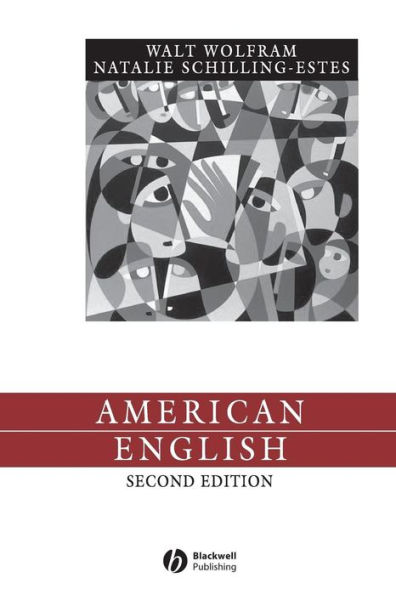Table of Contents
List of Figures.
List of Tables.
Series Editor’s Preface.
Preface.
Phonetic Symbols.
1 Dialects, Standards, and Vernaculars.
1.1 Defining Dialect.
1.2 Dialect: The Popular Viewpoint.
1.3 Dialect Myths and Reality.
1.4 Standards and Vernaculars.
1.5 Vernacular Dialects.
1.6 Labeling Vernacular Dialects.
1.7 Why Study Dialects?.
1.8 A Tradition of Study.
1.9 Further Reading.
2 Why Dialects?.
2.1 Sociohistorical Explanation.
2.1.1 Settlement.
2.1.2 Migration.
2.1.3 Geographical factors.
2.1.4 Language contact.
2.1.5 Economic ecology.
2.1.6 Social stratification.
2.1.7 Social interaction, social practices, and speech communities.
2.1.8 Group and individual identity.
2.2 Linguistic Explanation.
2.2.1 Rule extension.
2.2.2 Analogy.
2.2.3 Transparency and grammaticalization.
2.2.4 Pronunciation phenomena.
2.2.5 Words and word meanings.
2.3 The Final Product.
2.4 Further Reading.
3 Levels of Dialect.
3.1 Lexical Differences.
3.2 Slang.
3.3 Phonological Differences.
3.4 Grammatical Differences.
3.5 Language Use and Pragmatics.
3.6 Further Reading.
4 Dialects in the United States: Past, Present, and Future.
4.1 The First English(es) in America.
4.2 Earlier American English: The Colonial Period.
4.3 American English Extended.
4.4 The Westward Expansion of English.
4.5 The Present and Future State of American English.
4.6 Further Reading.
5 Regional Dialects.
5.1 Eliciting Regional Dialect Forms.
5.2 Mapping Regional Variants.
5.3 The Distribution of Dialect Forms.
5.4 Dialect Diffusion.
5.5 Perceptual Dialectology.
5.6 Region and Place.
5.7 Further Reading.
6 Social and Ethnic Dialects.
6.1 Defining Class.
6.2 Beyond Social Class.
6.3 The Patterning of Social Differences in Language.
6.4 Linguistic Constraints on Variability.
6.5 The Social Evaluation of Linguistic Features.
6.6 Social Class and Language Change.
6.7 Ethnicity.
6.8 Latino English.
6.8.1. Chicano English.
6.8.2 The range of Latino English.
6.9 Cajun English.
6.10 Lumbee English.
6.11 Further Reading.
7 African American English.
7.1 The Status of European American and African American Vernaculars.
7.2 The Origin and Early Development of AAE.
7.3 The Contemporary Development of AAE.
7.4 Conclusion.
7.5 Further Reading.
8 Gender and Language Variation (Was Chapter 7 in first edn).
8.1 Gender-Based Patterns of Variation as Reported in Dialect Surveys.
8.2 Explaining General Patterns.
8.3 Localized Expressions of Gender Relations.
8.4 Communities of Practice: Linking the Local and the Global.
8.5 Language-Use-based Approaches: The “Female Deficit” Approach.
8.6 The “Cultural Difference” Approach.
8.7 The “Dominance” Approach.
8.8 Further Implications.
8.9 Talking About Men and Women.
8.9.1 Generic he and man.
8.9.2 Family names and addresses.
8.9.3 Relationships of association.
8.9.4 Labeling.
8.10 The Question of Language Reform.
8.11 Further Reading.
9 Dialects and Style (Was Chapter 8 in first edn).
9.1 Types of Style Shifting.
9.2 Attention to Speech.
9.2.1 The Patterning of Stylistic Variation across Social Groups.
9.2.2 Limitations of the Attention to Speech Approach.
9.3 Audience Design.
9.3.1 The Effects of Audience on Speech Style.
9.3.2 Limitations of the Audience Design Approach.
9.3.3 Newer Approaches to Audience Design.
9.4 Speaker Design Approaches.
9.5 Further Considerations.
9.6 Further Reading.
10 On the Applications of Dialect Study.
10.1 Applied Dialectology.
10.2 Dialects and Testing.
10.2.1 Language achievement.
10.2.2 Speech and language development tests.
10.2.3 Predicting dialect interference.
10.3 Testing Language.
10.3.1 Using language to access information.
10.3.2 The testing situation.
10.3.3 The language diagnostician.
10.4 Teaching Standard English.
10.4.1 What standard?.
10.4.2 Approaches to standard English.
10.4.3 Can Standard English be taught?.
10.5 Further Reading.
11 Dialect Awareness: Extending Applications.
11.1 Dialects and Reading.
11.1.1 Dialect readers.
11.2 Dialect Influence in Written Language.
11.3 Written Dialect.
11.4 Proactive Dialect Awareness Programs.
11.5 A Curriculum on Dialects.
11.6 Community-based Dialect Awareness Programs.
11.7 Scrutinizing Community Partnerships.
11.8 Further Reading.
Appendix: An Inventory of Socially Diagnostic Structures.
Glossary.
References.
Index.






